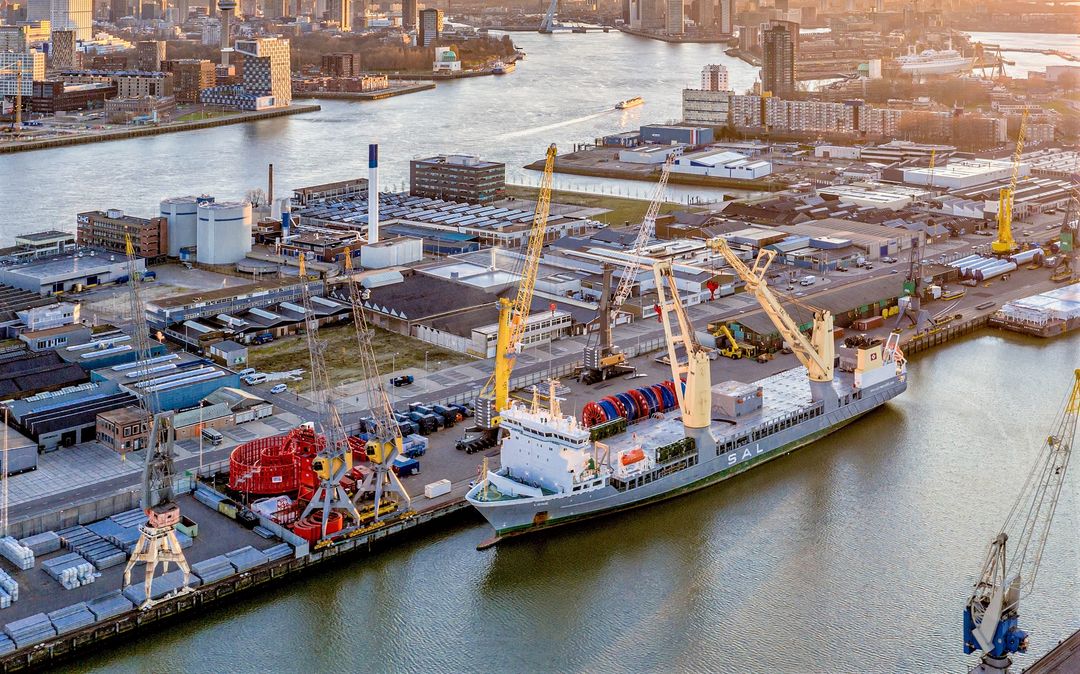Breakbulk cargo, also referred to as non-containerized or project cargo, is undergoing a transformative phase driven by innovative technologies and approaches. Unlike standard container shipments, breakbulk cargo surpasses the dimensions of conventional containers and includes items such as construction machinery, wind turbine components, and oversized generators or transformers.
Understanding Breakbulk Shipping
Breakbulk shipping offers a preferred mode of transportation for oversized cargo due to its unique characteristics. Unlike containerized cargo, breakbulk items typically do not require disassembly for loading onto vessels, eliminating the need for reassembly at the destination. This streamlined process saves time and resources, enhancing efficiency in logistics operations.
Moreover, breakbulk cargo’s non-containerized nature provides flexibility in port options, including Roll-On/Roll-Off (RoRo) shipping, as it doesn’t always necessitate the use of port cranes for unloading. Additionally, since the cargo remains intact throughout the journey, only a single bill of lading is required for international shipping, simplifying documentation procedures.
Distinguishing Breakbulk Shipping from Bulk Shipping
It’s essential to differentiate between breakbulk shipping and traditional bulk shipping. While bulk shipping involves transporting large quantities of loose goods, breakbulk shipping caters to items that cannot be accommodated in containers or shipped as standard bulk cargo. This distinction is crucial, especially for industries dealing with oversized or unconventional cargo.
Challenges and Solutions
Breakbulk shipping, despite its advantages, presents certain challenges, notably in handling and cost estimation. The large and unconventional nature of breakbulk cargo requires additional handling, increasing the risk of damage or vandalism. However, advancements in shipping technology have addressed these concerns by providing fully enclosed and secure conditions for transporting non-containerized cargo.
Collaborating with experienced project cargo freight forwarders equipped with cutting-edge technologies and a skilled team mitigates risks and ensures the safe delivery of cargo. While breakbulk shipping often incurs higher costs compared to containerized shipping due to increased handling and labor requirements, partnering with reliable international freight forwarders helps manage budgets and minimize unforeseen expenses.
Innovations Driving Change
Technological innovations are revolutionizing breakbulk shipping, enhancing the movement of oversized cargo. Vessel owners are now designing ships with increased capacity and lifting capabilities, enabling the safe transportation of large components for projects such as power plants. Notable among these innovations is the 53-foot BreakBulk Boxx, designed for side-loading and unloading of breakbulk cargo, offering a no-transfer service for specific trade routes.
Despite its challenges, breakbulk shipping remains the optimal choice for transporting large, heavy, high-value equipment or project cargo that cannot fit standard containers. By leveraging innovative technologies and collaborating with reliable international freight forwarders, businesses can navigate the complexities of breakbulk shipping effectively, ensuring timely and secure delivery of cargo.
In short, the evolving landscape of breakbulk shipping underscores the importance of embracing innovations to streamline logistics processes and enhance efficiency in transporting oversized cargo. As industries continue to rely on breakbulk shipping for their specialized transportation needs, staying abreast of technological advancements and partnering with experienced freight forwarders are essential strategies for success in this dynamic sector.





